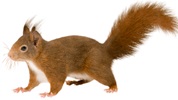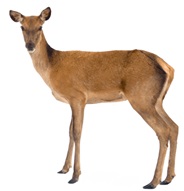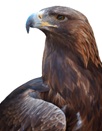Terrestrial Habitat
1. What are sweat glands? Why are they absent in kangaroos?
- The sweat glands are meant for the loss of water through the skin.
- As kangaroos are found in the desert, their skin lacks sweat glands to reduce the passive loss of water through the skin.
- It helps in the retention of water in their bodies during water scarcity.
2. How do black circles around the eyes of the meerkat help in protecting their eyes?
- The black circles around the eyes of meerkats prohibit intense light rays from entering their eyes and protect them from any damage.
- The colour black is a good absorber of light rays and absorbs the light rays of almost all wavelengths.

3. How do long or large ears improve the sense of hearing?
- The outer ear or pinnae is specialised to gather sound waves and channel them to the inner ear.
- Thus, the presence of long ears in some animals collects more sound waves and hence, helps improve hearing.
4. What are nocturnal animals? Why are most desert animals nocturnal?
- The animals that are more active during the night than the day are called nocturnal animals.
- The temperature in deserts is too high and unbearable during the day. So, the animals in deserts hide themselves to escape the heat.
- At night, the temperature decreases, making it easy for the animals to hunt.
5. How are the bodies of arboreal animals specialized for their habitat?
- The animals with arboreal habitats have curved bodies, making it easy for them to climb the trees.
- Also, they have strong chest muscles, which help them to move between the branches climbing and grasping them.

6. What are cursorial animals? How are they adapted according to their needs?
- The terrestrial animals adapted to run fast are called cursorial animals, like deer, leopards, etc.
- They show the following adaptations—
- Their body is spindle-shaped.
- The ribs are flattened.
- They have an extended head and neck.
- Their forelimbs are shorter than the hind limbs.

7. Why are mountain animals large in size?
- The animals living in the mountains need to survive in extreme cold climatic conditions. One of the significant adaptations for surviving in such an environment is body heat retention.
- Smaller bodies tend to lose body heat more quickly. So, mountain animals have large bodies to retain their body heat and stay warm.
8. How are golden eagles adapted to live in the mountains?
They have the following adaptations that help them live in the mountains—
- They are huge and can weigh up to 5 kilograms.
- They have a wingspan that varies from 180-220 cm.
- They have good eyesight and can spot their prey from a distance.
- Their body is covered with dark brown coloured feathers. This colour varies in different body parts of the eagle.

CBSE Schools In Popular Cities
- CBSE Schools in Bangalore
- CBSE Schools in Mumbai
- CBSE Schools in Pune
- CBSE Schools in Hyderabad
- CBSE Schools in Chennai
- CBSE Schools in Gurgaon
- CBSE Schools in Kolkata
- CBSE Schools in Indore
- CBSE Schools in Sonipat
- CBSE Schools in Delhi
- CBSE Schools in Rohtak
- CBSE Schools in Bhopal
- CBSE Schools in Aurangabad
- CBSE Schools in Jabalpur
- CBSE Schools in Jaipur
- CBSE Schools in Jodhpur
- CBSE Schools in Nagpur
- CBSE Schools in Ahmednagar
- CBSE School In Tumkur











